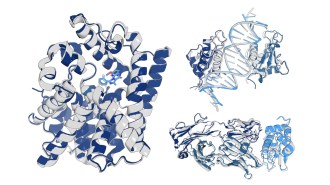Leaden blood hikes granny’s heart risks
After menopause, women face a rapidly increasing risk of heart disease. In short order, heart attacks and other manifestations of heart disease become the leading causes of death in women. One possible, newfound contributor to the postmenopausal spike in lethal heart disease: lead.
This toxic heavy metal used to pervade industrialized societies. It was an ingredient in most paints and gasoline, was molded into the pipes that conveyed drinking water to urban homes, and sometimes even found use in medicines. Although lead has been outlawed from most commercial products, our bodies still retain traces of past exposures. And that’s not good.
A new study in women 65 and older indicates that the more lead circulating in the blood of golden girls, the higher the likelihood these women will die prematurely. And residues in this population tended to be low — under 10 micrograms per deciliter of blood. As recently as the 1970s, that value would have been considered all but benign.
Compared to women who had entered the study with less than 8 µg/dl of blood, those who had higher lead contamination had a nearly 60 percent increased risk of dying during the study. This was after accounting for such potentially confounding factors as age, whether they smoked and drinking history. The findings appear in a paper due to come out soon in Environmental Health.
Coronary heart disease was the main culprit. For instance, women with at least 8 µg/dl lead at baseline were roughly three times more likely than the less-exposed women to die from coronary heart disease. In earlier studies with far larger groups of participants — and usually far higher exposures — lead raised blood pressure, contributed to atherosclerosis and affected the health of arteries.
“We observed that in women who had died due to stroke, their blood-lead levels were much higher than in women who died from other causes,” points out Naila Khalil of Wright State University. In her team’s paper, she and the others note that the “mean blood-lead concentration in participants who died due to stroke was 22 percent higher as compared to the rest of the cohort.” The numbers weren‘t statistically significant, however, owing to the small numbers of stroke victims.
Lead showed no association with death from cancer, diabetes or other major conditions.
Khalil and her colleagues analyzed blood-lead values for a subset of women participating in a long-running Study of Osteoporotic Fractures. The 533 women who were studied lived either in Baltimore or outside Pittsburgh, they were at least 65 years old when they began participating and they have been followed for roughly a dozen years. During that follow-up, 123 women died (23 percent).
“To our knowledge,” the researchers say, no other study has linked blood lead and mortality risks in women aged 65 to 87 years old.
The new study’s findings “are pretty consistent with what people have seen” — at least in other demographic groups, says William Atchison, a Michigan State University toxicologist who has probed lead’s effects. “There is definitely an indication that for certain risk groups, lead may play an additional [toxic] role.”
A big role in women’s heart risks? “My sense is that it’s a pretty small contributor,” he says. But when I asked Atchison whether it surprised him that lead might be “a” contributor to postmenopausal heart risks, he offered an emphatic “No!”
Because bones absorb lead — mistaking it for calcium — many people are walking around with substantial skeletal stores of the toxic heavy metal. And data have begun suggesting that as our bones age and thin, they release their lead into the blood again. “In our study,” Khalil’s group writes, women with at least 8 µg/dl “had 8 percent lower total hip-bone-mineral density at baseline as compared to women with lower lead concentrations.”
Khalil and Jane Cauley, an epidemiologist at the University of Pittsburgh, co-led an earlier study that investigated lead’s link to bone health. Published last year, it showed women with the most lead circulating in blood faced a significantly greater risk of falls and hip fractures than did women with the least lead.
Such findings would suggest osteoporosis therapy might pay dual dividends, Cauley says: stronger bones and less circulating lead.
In future, grannies may have relatively little to fear from any lead link to heart disease. Why? Those who participated in the current study were likely exposed to relatively high concentrations of the heavy metal and for decades, Cauley says. As communities have cleaned up their act, exposures have fallen. So today’s young women should have relatively little to leach out down the road.
But men, don’t get smug. There’s no reason you shouldn’t also experience a lead link to heart disease. Indeed, Cauley says her team is investigating this possibility right now in a group of men who worked near Pittsburgh.
Although a growing number of studies has steadily strengthened low-level lead’s association with cardiac disease, “we don’t know how it harms,” observes Martha Daviglus, a physician specializing in preventive and geriatric medicine at Northwestern University’s Feinberg School of Medicine. “We know that lead is toxic for the heart, but we don’t know if the mechanism is through the heart, the bone, or something else.”






